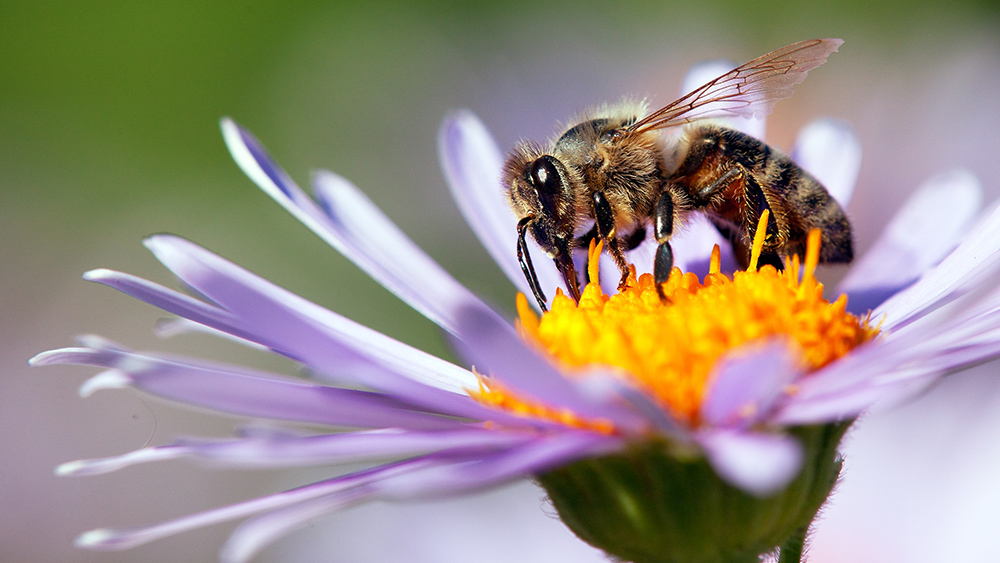Twelve years later, Science magazine published an article describing the “unprecedented cognitive flexibility” of bees using a ball to get a reward.2 Biologist Loukola said,
I think the most important result in our case was that bumblebees can not just copy others but they can improve upon what they are learning…This is of course amazing for small-brained insects—even for us, it’s difficult to improve on something when we are copying others.3
It seems these tiny invertebrates—small-brained insects, mind you—have been designed with the extraordinary ability to reason and learn. In 2019, it was discovered that bees can link symbols to numbers. “We know bees get the concept of zero and can do basic math. Now researchers have discovered they may also be capable of connecting symbols to numbers.”4
Authors of an amazing bee article in the Proceedings of the Royal Society B give a more detailed overview of this same research. “Here we show that honeybees are able to learn to match a sign to a numerosity, or a numerosity to a sign, and subsequently transfer this knowledge to novel numerosity stimuli changed in colour properties, shape and configuration.”5
A neuron is a nerve cell through which electrochemical impulses are transmitted. A whale’s brain has over 200 billion neurons, human brains have an estimated 86 billion neurons, and a honeybee’s (Apis mellifera) brain contains fewer than one million neurons. However, “Despite their tiny brains bees are capable of extraordinary feats of behavior,” said Dr. Nigel Raine, from Royal Holloway’s school of biological sciences at the University of London.6
But researchers are finding that it’s not necessarily the mass or sheer number of neurons in an animal that accounts for the creature’s cognition—it seems rather to lie in the neural circuits, specifically the circuits’ interconnectivity and modularity.7 It appears the neural circuits must be arranged and connected in a very specific manner in order to function as optimally as they do.
Yes, bees are designed with a brain the size of a grass seed with less than one million neurons, and yet they can recognize human faces, count, improve upon what they are learning, do basic math, link symbols to numbers, and navigate using spatial memory with a “rich, map-like organization.”8
As an evolutionist said, “These are, high, high, highly intelligent creatures,”3 Agreed. One must ask: Are bees the result of time and chance or plan, purpose, and creation?
References
1. Lucentini, J. Bees can recognize human faces, study finds. Physorg and World Science. Posted on phys.org December 11, 2005, accessed June 18, 2019.
2. Loukola, O. et al. 2017. Bumblebees show cognitive flexibility by improving on an observed complex behavior. Science. V. 355: 833-36.
3. Hugo, K. Intelligence test shows bees can learn to solve tasks from other bees. PBS. Posted on pbs.org February 23, 2017, accessed June 19, 2019.
4. Sciencedaily.com, June 5, 2019. Bees can link symbols to numbers, study finds. Sciencedaily. Posted on sciencedaily.com June 5, 2019, accessed June 19, 2019.
5. Howard, S. et al. 2019. Symbolic representation of numerosity by honeybees [Apis mellifera]: matching characters to small quantities. Proceedings of the Royal Society B. 286, 1904.
6. Bees’ tiny brains beat computers, study finds. The Guardian. Posted on theguardian.com October 24, 2010 accessed June 18, 2019.
7. Chittka, L. and J. Niven. 2009. Are Bigger Brains Better? Current Biology. 19 (21): R995-R1008
8. Menzel, et al. 2005. Honey bees navigate according to a map-like spatial memory. PNAS. 102 (8): 3040–3045.
*Mr. Sherwin is Research Associate is at ICR. He has a master’s in zoology from the University of Northern Colorado.






















